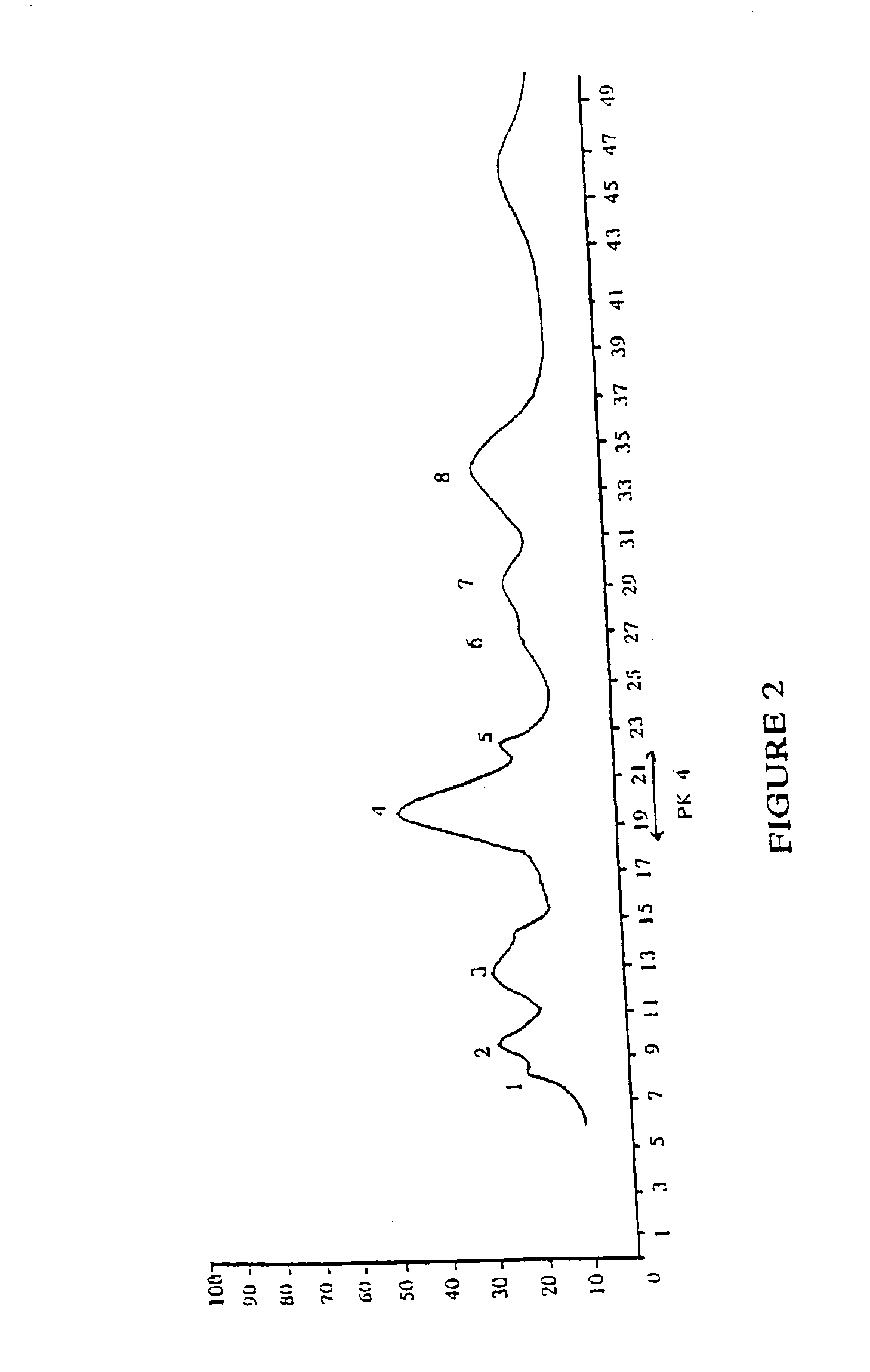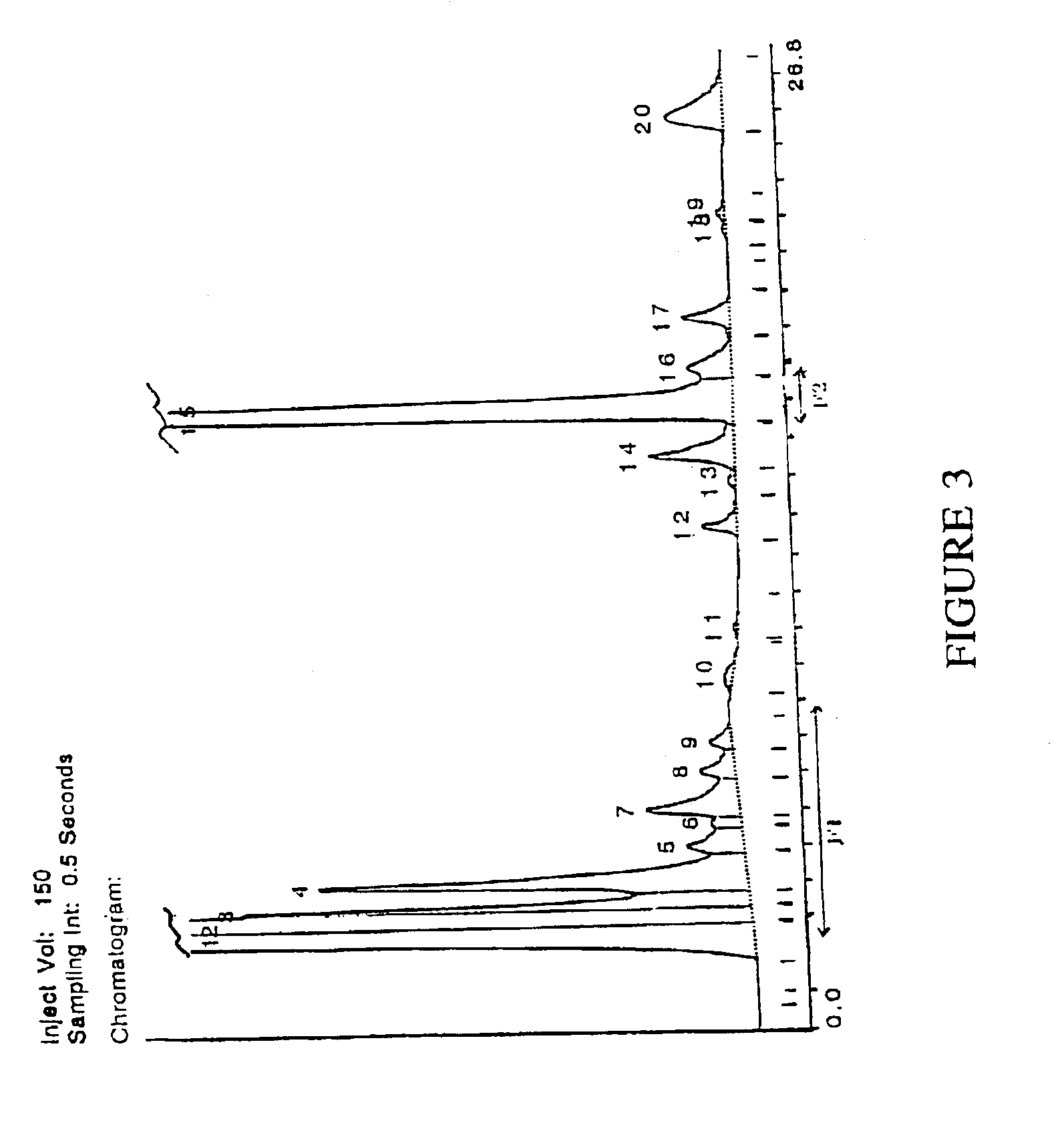Antithrombotic agents
a technology of antithrombotic agents and antithrombotic agents, which is applied in the direction of magnoliophyta medical ingredients, plant ingredients, biocide, etc., can solve the problems of common adverse effects and achieve the effects of preventing coronary disease, preventing further thromboembolic events, and inhibiting platelet aggregation
- Summary
- Abstract
- Description
- Claims
- Application Information
AI Technical Summary
Benefits of technology
Problems solved by technology
Method used
Image
Examples
example 1
ADP Induced Platelet Aggregation Study
Methods
[0069]Extracts consisting of 100% fruit juice or diluted fruit juice were freshly prepared on the day of the assay from the fruits set out in Table 1 below. To prepare 100% fruit juice, the fruit were peeled and the flesh was homogenised. The resulting homogenate was spun at 3,000×G for 10 minutes on a centrifuge in 1.5 ml Eppendorf tubes after which the supernatant (juice) was removed and the pH of the juice adjusted to pH 7.4 with either 1M or 0.1M sodium hydroxide depending on the initial pH of the fruit extract. For relatively fibrous fruits (apple, mango, avocado), a 20% or 50% w / v extract was prepared by homogenising either 20% or 50% fruit with phosphate buffered saline (PBS) at pH 7.4, the homogenate being processed as described above in relation to the 100% fruit extracts.
[0070]The effect of the fruit extracts on the aggregatory properties of human platelets was investigated in young volunteers. Venous blood was collected from vo...
example 2
Partial Fractionation of Tomato Extract
Methods
[0075]Tomato extracts were fractionated according to the general scheme set out in FIG. 1 and the platelet aggregation inhibiting activity measured at various stages. Thus, fresh tomato juice, prepared from 100% fruit, was boiled for 10 minutes and was then centrifuged at 113,000 g for 30 minutes. The platelet aggregation inhibiting activity of the extract is shown in Table 1 above.
[0076]Following centrifugation, a portion of the supernatant extract was subjected to ultrafiltration by passing through an Amicon YM1 filtration membrane with a molecular weight cut-off of 1000, under nitrogen pressure at 4° C. The ultrafiltrate was collected, as was any retained fruit juice remaining above the filter (retentate), and the ultrafiltrate and retentate were then both tested for their activities in inhibiting ADP or collagen induced platelet aggregation. The anti-platelet activities of the ultrafiltrate and retentate were the same indicating that...
example 3
Isolation and Identification of Active Anti-Platelet Aggregation Component from Tomato Extract
Methods
[0081]Tomato extracts were fractionated according to the general scheme set out in FIG. 1 and the platelet aggregation inhibiting activity measured at various stages. Thus, fresh tomato juice, prepared from 100% fruit, was boiled for 10 minutes and was then centrifuged at 113,000 g for 30 minutes.
[0082]Following centrifugation, a portion of the supernatant extract was subjected to ultrafiltration by passing through an Amicon YM1 filtration membrane with a molecular weight cut-off of 1000, under nitrogen pressure at 4° C. The ultrafiltrate, MWCO 1000, was collected and a sample tested for activity in inhibiting ADP or collagen induced platelet aggregation. The ultrafiltrate was freeze dried for further purification.
[0083]The freeze dried sample was suspended in 2 ml water. The anti-platelet aggregation activity of this aqueous phase was compared with 50 μl of PBS as a control. Since o...
PUM
 Login to View More
Login to View More Abstract
Description
Claims
Application Information
 Login to View More
Login to View More - R&D
- Intellectual Property
- Life Sciences
- Materials
- Tech Scout
- Unparalleled Data Quality
- Higher Quality Content
- 60% Fewer Hallucinations
Browse by: Latest US Patents, China's latest patents, Technical Efficacy Thesaurus, Application Domain, Technology Topic, Popular Technical Reports.
© 2025 PatSnap. All rights reserved.Legal|Privacy policy|Modern Slavery Act Transparency Statement|Sitemap|About US| Contact US: help@patsnap.com



